I’ve never had a normal experience with gingerbread.
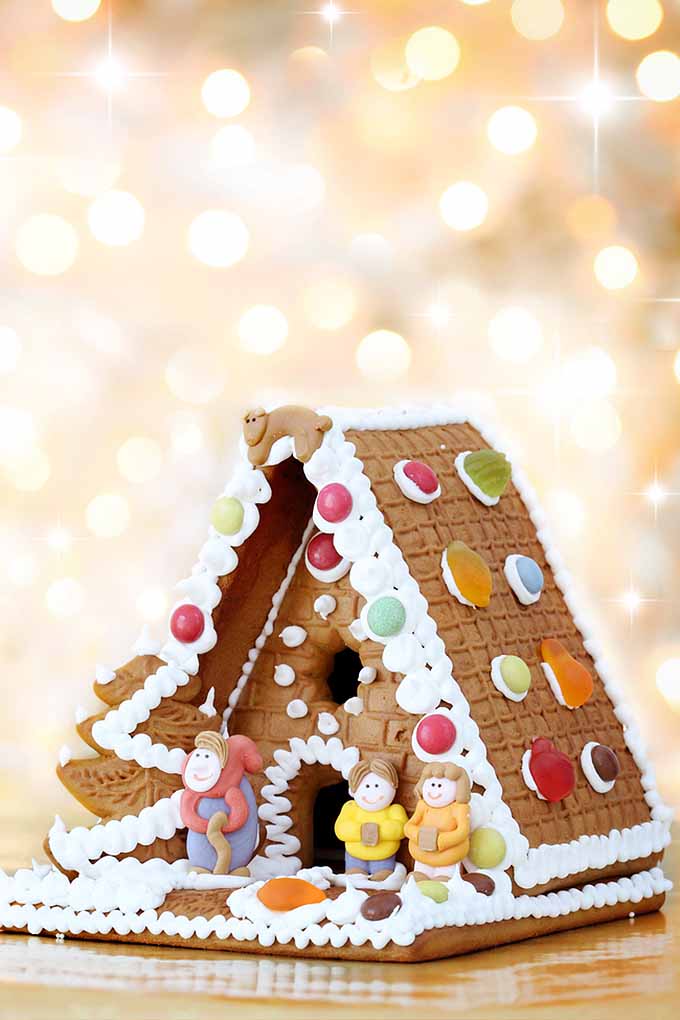
One winter, my friend I decided to build a gingerbread house, complete with a cookie-shingled roof, peanut brittle mosaic, and a salty pretzel chandelier.
Soon after we made this edible architectural beauty, we destroyed it.
With BB guns and samurai swords in my backyard.

Another winter, the same friend and I made zombie and ninja-themed gingerbread men, decorating them with bloody, garish designs with brightly colored royal icing.
With all of these crazy ideas among the classic decorations, it is easy to admire this dessert’s amazing versatility.
Gingerbread is emblematic of lighthearted interpretation throughout history, as both a cookie and a cake, without ever compromising its characteristic spiciness and that deep, molasses sweetness.
Why has it become such a popular dessert, and the standard material for our imaginative designs each winter?
Keep reading to find out!
The Basics
Gingerbread is a sweet dessert that’s defined by its combination of intense warming spices (ground ginger, cinnamon, cloves, and nutmeg) and strongly flavored sweet ingredients, typically honey or molasses.
Tarla Fallgatter, a well-known culinary professional, explains the name behind the dessert.
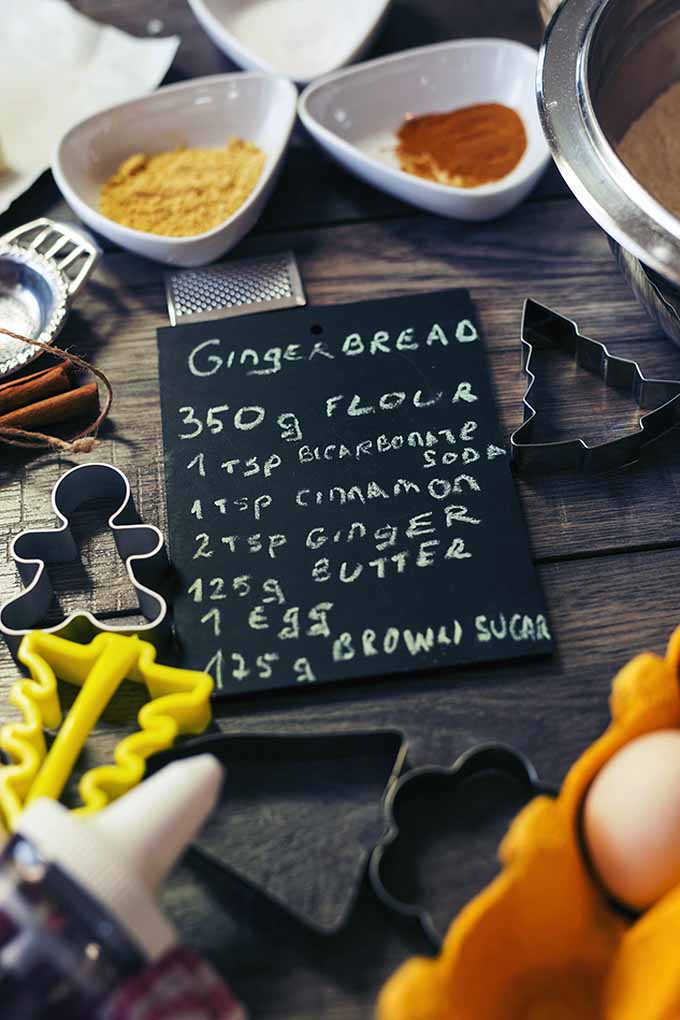
Because many recipes, particularly those from Europe, do contain candied ginger in addition to the ground variety, the meaning of “gingerbread” comes from the term “preserved ginger.” This is loosely derived from the Old French term “gingebras,” itself derived from the Latin name of the spice, “zingebar.”
Quite a delicious mouthful.
There are a few basic styles of this spicy treat, with even more variations on the ingredients and cooking methods, depending upon history, geography, and culture.
Fallgatter details the wide ranging nature of this dessert:
“In some places, it was a soft, delicately spiced cake; in others, a crisp, flat cookie, and in others, warm, thick, steamy-dark squares of “bread,” sometimes served with a pitcher of lemon sauce or whipped cream. It was sometimes light, sometimes dark, sometimes sweet, sometimes spicy.”
A European Tradition
This gingery favorite with so many adaptations has a long history that may date back as far as Ancient Greece.
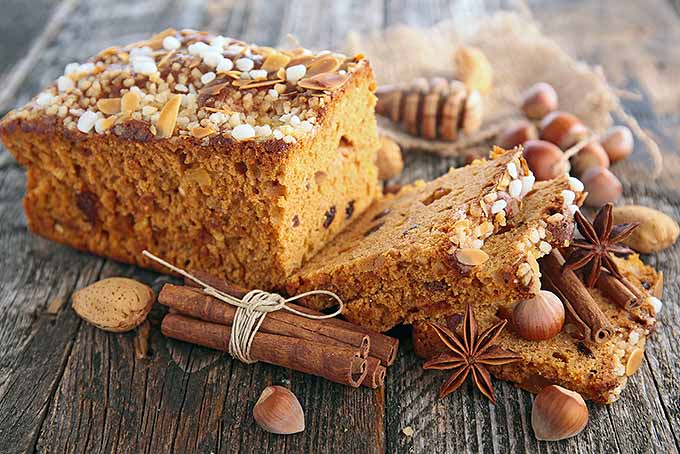
One of the first recipes originates in Greece around 2400 B.C. The recipe was likely introduced to Western Europe in the eleventh century by crusaders who were returning from the eastern Mediterranean and Asia.
According to Amanda Fiegl of Smithsonian, it was a favorite dessert at medieval fairs throughout England, France, Holland, and Germany.
Some of these festivals were even called “gingerbread fairs,” where decorated cookies – shaped to look like flowers, birds, animals, and houses – were displayed for public enjoyment. Knights were often given a piece as a sign of good luck in a tournament at the fair.
In German autumn and winter street festivals, from the medieval time period to the present day, “lebkuchen,” – a specialty gingerbread cookie flavored with honey – would traditionally be decorated in the shape of a heart and sold by vendors.

Because of the candied ginger and the moisture-loving molasses or honey in these recipes, gingerbread desserts have an amazing keeping quality. This helps with long-term storage, and makes it possible to keep the desserts on display for longer periods of time without risk of spoiling.
This was great for vendors at outdoor festivals, as the cookies and other treats maintained their beautiful display throughout the many hours of the celebrations.

Due to the importance of gingerbread in Europe, its own guild was established in the seventeenth century – until the elimination of food production guilds came to pass in the late eighteenth century.
Within that time frame, gingerbread bakers were given the exclusive right to prepare it, except for on major holidays like Christmas and Easter, when families would traditionally prepare it at home.
People-Shaped Cookies: Not as Creepy as You Think
One of the defining characteristics of this spicy cookie is shaping them in the likeness of people (see Exhibit A: my super awesome ninja cookies). This is an amusing decorating idea that has been enjoyed for centuries, starting with the European fairs of old.
In her book Making Gingerbread Houses, Rhonda Massingham Hart credits Queen Elizabeth I with the original idea of shaping and decorating cookies to resemble and honor the many dignitaries that would visit her court.
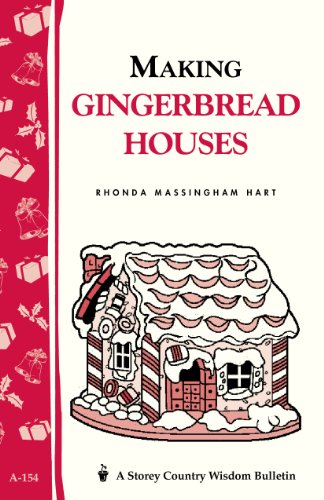
Making Gingerbread Houses, available on Amazon
Elaborately decorated with precious gold leaf and sugar garnishes, they were the epitome of English extravagance.
Stepping far outside the royal court, this style of decoration was also popular amongst the general populous. At the fairs, it was a fun tradition for unmarried women to eat cookies shaped like men – or potential husbands – in the hope of soon finding a real suitor.
Whether or not the matchmaking succeeded with the bachelorettes of the time, the tradition of baking cookies in shapes of men, women, and children still endures to this day.
New World Arrival
Gingerbread made its way across the ocean to the New World with the arrival of Northern European colonists at the start of the seventeenth century, who brought their family recipes and customs.
And the much-loved treat was happy to put down its gingery roots in American soil.
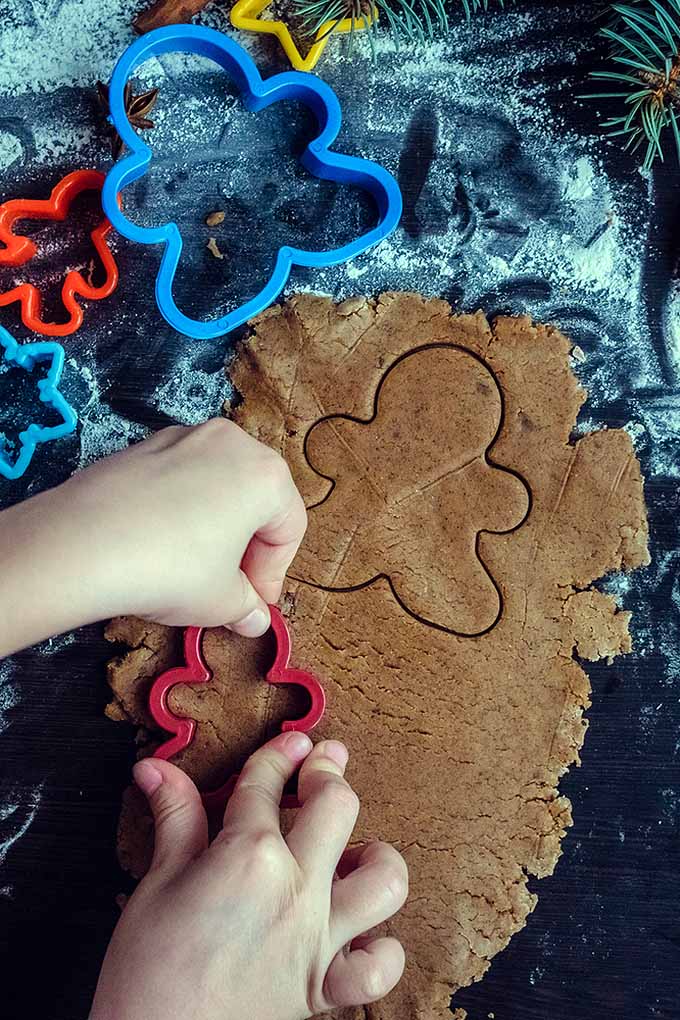
It quickly became known as a popular dessert in America, with an expansive interpretation of recipes based on regionally available ingredients of the land.
Sweeteners were a great example of this. Maple syrup was used in New England to sweeten cakes, while Southerners used sorghum molasses.
Much like in Europe, Americans celebrated fall and winter festivals where this dessert was one of the sweets featured as a decorative edible product. It was also very popular as a treat made at home, as noted in American recipe books throughout past centuries.
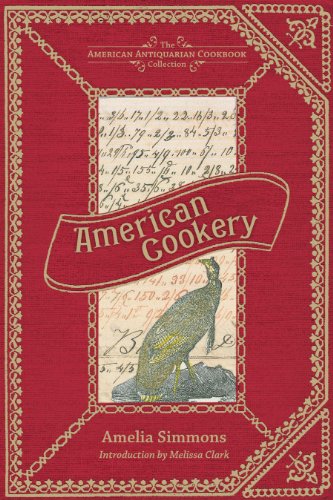
American Cookery from the American Antiquarian Cookbook Collection, available on Amazon
One of the first published American cookbooks, the 1796 American Cookery recipe book by Amelia Simmons, includes three different recipes for it: two stiffer varieties that are shaped “to your fancy” (the most similar to the cutout cookies we bake today), and one softer style baked in a pan.
Cultural and Literary References
Some sources claim literary references inspired the creation of this spicy sweet.
Rather, based on the chronology we have already outlined, it was the other way around. As it goes for most pop culture references, foodstuffs served as small, edible inspirations for songs, stories, fables, and plays.

Let’s not forget the iconic quote of “You can’t catch me. I’m the Gingerbread Man!” from the ever-popular 1875 American fairy tale.
Some believe that the creation of sweet houses made from hardened styles of the cookies were first inspired by the Brothers Grimm tale of Hansel and Gretel. The cannibalistic witch in the story lures the children into her home made of cakes, candies, and other sweets.

But the timeline here is a little off.
Well before the sweet teeth of Hansel and Gretel were enticed by a hungry witch, gingerbread was a central cultural item for centuries. Case in point, it was briefly mentioned in a Shakespearian play back in the late sixteenth century.
Since the tale of Hansel and Gretel was not published until 1812, hundreds of years after the dessert first became a celebrated sweet throughout Europe, the storyline in question could not have inspired its creation.

Even so, it may have helped to commercialize and boost the activity of making house displays. Perhaps it promoted the market of gingerbread houses that could be assembled at home, in times when families shared the tale of Hansel and Gretel.
These cultural references spanning many centuries are further support to indicate that this dessert has long maintained the status a global celebrity of the pastry world. The iconic flavor profile and versatile uses have definitely bolstered its longevity, both in kitchens and in stories.
How Do You Like to Use It?
Each winter, gingerbread offers a sweet and spicy treat throughout the world, especially for those who are celebrating winter fairs and festivals. There are even some gluten-free similar ginger cookie variations, if you look for them.
If you’re making a cake or a big and soft cookie, or a candy-covered cottage or gory zombie men, be sure to honor the long history of this unforgettable dessert!

I’m off to make some more cookies! What about you? Let me know what your gingerbread-making traditions are in the comment section below!
Photo credit: Shutterstock. Significantly revised and expanded from a post originally written by Allison Sidhu.
About Nikki Cervone
Nikki Cervone is an ACS Certified Cheese Professional and cheesemonger living in Pittsburgh. Nikki holds an AAS in baking/pastry from Westmoreland County Community College, a BA in Communications from Duquesne University, and an MLA in Gastronomy from Boston University. When she's not nibbling on her favorite cheeses or testing a batch of cupcakes, Nikki enjoys a healthy dose of yoga, wine, hiking, singing in the shower, and chocolate. Lots of chocolate.



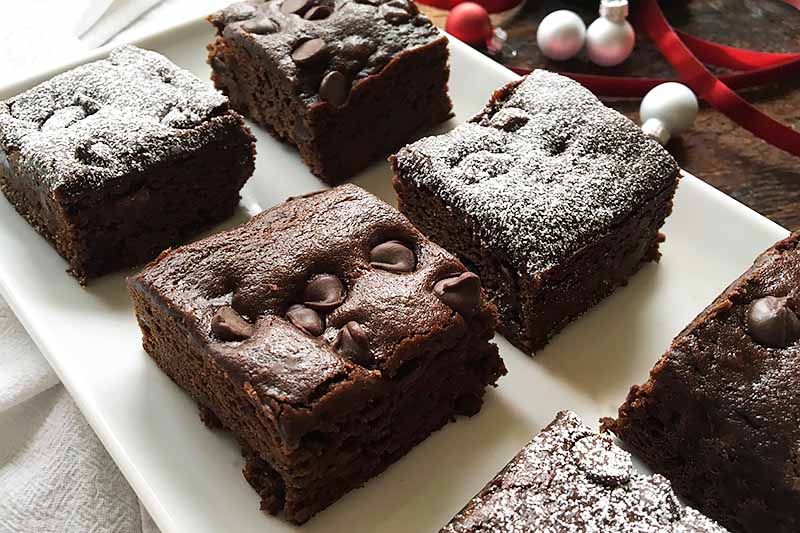



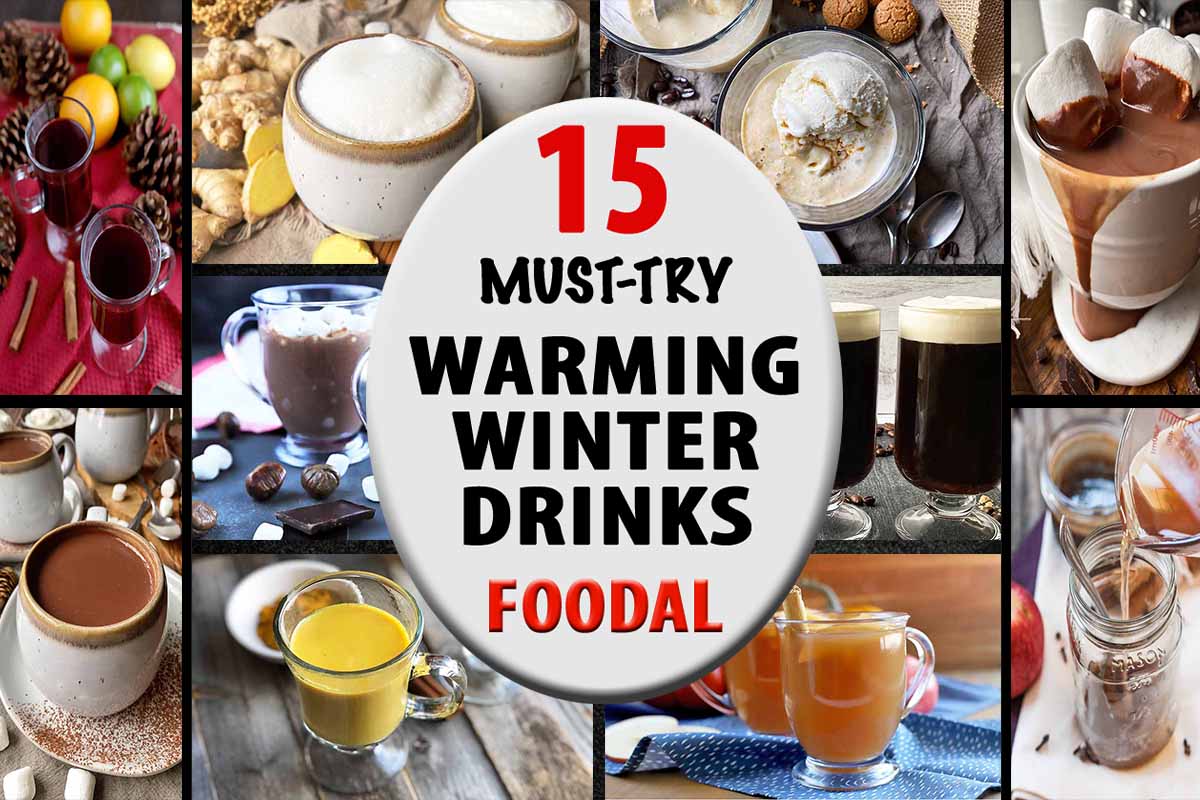
I bought the molasses recently to make cookies, this just juiced me up to bake some this week so maybe have them still for Christmas dinner!